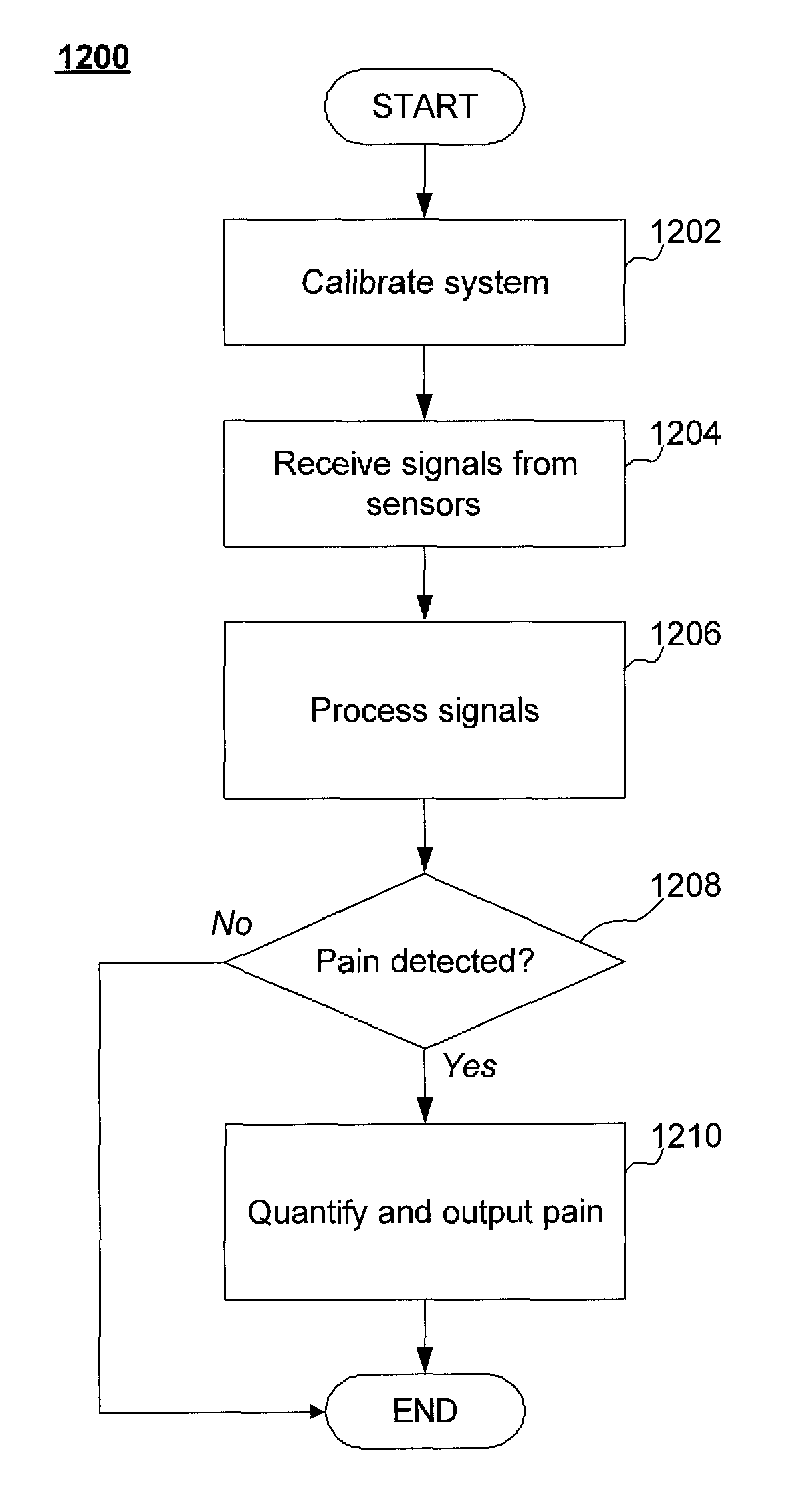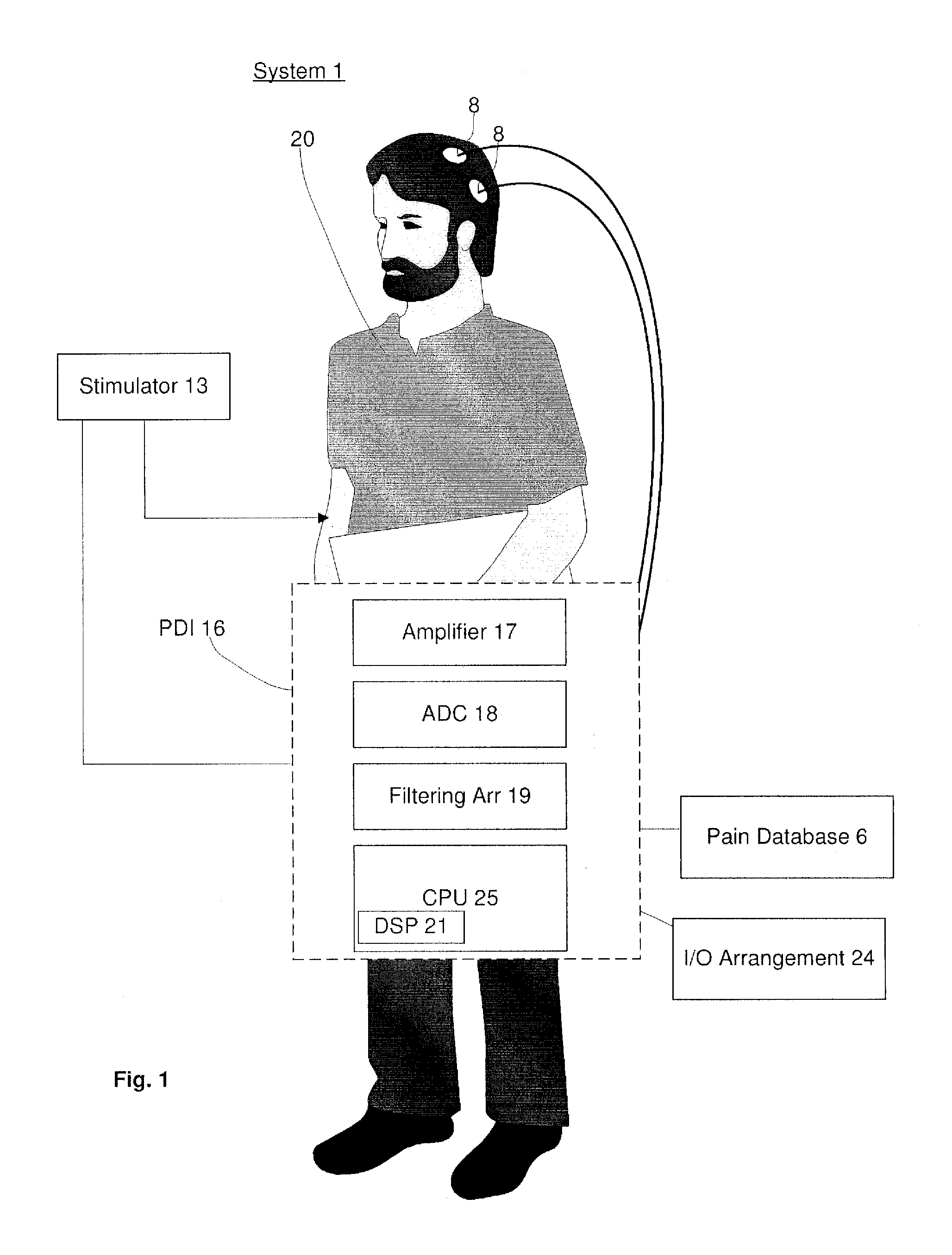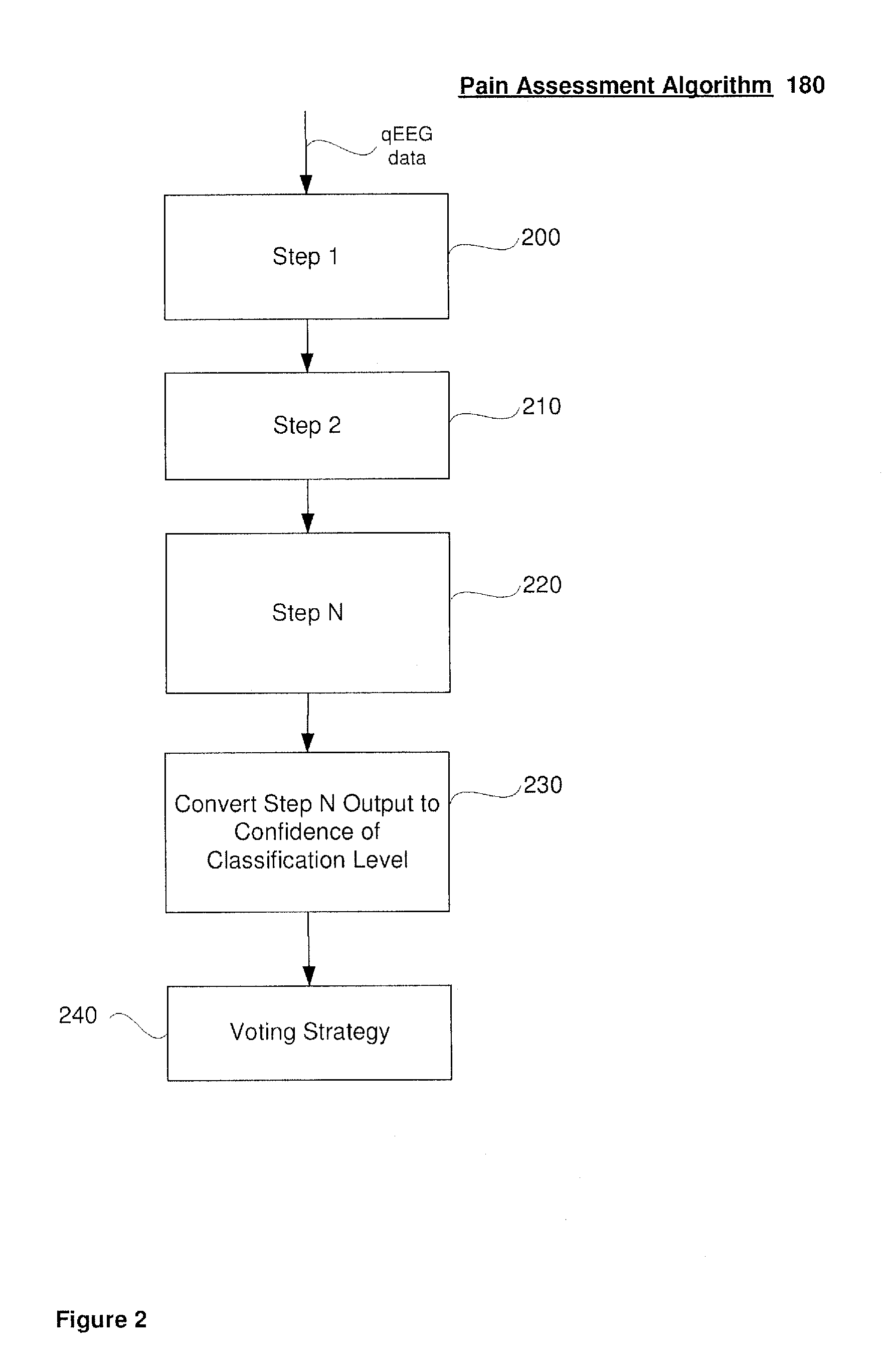System and method for pain detection and computation of a pain quantification index
a pain detection and quantification index technology, applied in the field of system and method for pain detection and computation of pain quantification index, can solve the problems of widespread undertreatment of acute and especially chronic pain, and unfavorable patient control of analgesics,
- Summary
- Abstract
- Description
- Claims
- Application Information
AI Technical Summary
Benefits of technology
Problems solved by technology
Method used
Image
Examples
Embodiment Construction
[0012]The present invention may be further understood with reference to the following description and the appended drawings, wherein like elements are provided with the same reference numerals. The present invention describes a system and method for detecting pain by analyzing brain wave data collected from an electroencephalogram (EEG). Those skilled in the art will understand that other types of data relating to brain activity may be manipulated in a manner similar to that described herein to achieve similar results. Thus, the description of EEG and the specific descriptions of EEG features are illustrative of exemplary embodiments of the invention and should not be construed to limit the scope of this invention. For example, activity of any body system sensitive to pain (e.g., autonomic nervous system, sweating or galvanic skin response (GSR), tearing of the eyes, contraction of muscles on the forehead—frontalis, orbicularis, skin around the eyes, etc.) may be measured and quanti...
PUM
 Login to View More
Login to View More Abstract
Description
Claims
Application Information
 Login to View More
Login to View More - R&D
- Intellectual Property
- Life Sciences
- Materials
- Tech Scout
- Unparalleled Data Quality
- Higher Quality Content
- 60% Fewer Hallucinations
Browse by: Latest US Patents, China's latest patents, Technical Efficacy Thesaurus, Application Domain, Technology Topic, Popular Technical Reports.
© 2025 PatSnap. All rights reserved.Legal|Privacy policy|Modern Slavery Act Transparency Statement|Sitemap|About US| Contact US: help@patsnap.com



